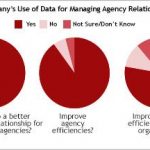Data Integration Is Key For Getting The Most From Programmatic, Yahoo Says
by Tobi Elkin, Staff Writer @tobielkin, September 30, 2016
While Yahoo has made headlines in recent days with reports of a massive 2014 data breach — which that could have serious implications for Verizon’s planned $4.8 billion acquisition of the company — it’s worth mentioning that Yahoo teams continue toiling away on programmatic media strategies, among other things.

The team focused on Yahoo’s programmatic business took center stage during Advertising Week during various panels. One theme that came up revolved around data and the fact that marketers need to own their own first-party data. First-party data is data they can trust and a good starting point for how to approach a programmatic campaign. However, first-party data is limited. That means that marketers need to supplement it with second-party data from publishers, and third-party data from a variety of sources.
Then, one of the biggest challenges for marketers is how to integrate or “marry” first-, second-, and third-party data to get a good understanding of targets, messaging, and other intelligence.
RTBlog didn’t hear that much about the importance of data integration and best practices for how to accomplish it at Advertising Week.
Yannis Dosios, VP of platform & exchange, Yahoo, runs the company’s BrightRoll demand-side platform (DSP) and works closely with agencies and their trading desks. Dosios told RTBlog that one of Yahoo’s differentiators is that its exchange accepts not only all first-party data, but second- and third-party data as well. “Once you get the data, you can buy [inventory] with that data not only using our DSP, but on other exchanges. You can still use the same data sets versus having to replicate them with other exchanges,” he said. “You can use the data anywhere. Not all DSPs allow you to use data that way.”
Dosios, who came to Yahoo via the company’s acquisition of Flurry two years ago, cited another challenge facing marketers: managing multiple DSPs. “Learning a new DSP takes a very long time,” he said. Marketers have different DSPs for various kinds of ad inventory. Yahoo’s DSP offers a unified platform that enables marketers to work across all platforms and formats — which helps keep costs down and streamlines processes, he said.
Dosios cited another challenge in the business: gaining access to higher quality video supply. Apparently that’s ad inventory that plays on a larger video player, with formats as large as 600 x 300, and it’s in short supply.
“Marketers want to access that type of inventory. We need better packaging of that kind of highly viewable inventory,” he said. “Marketers are expecting certain kinds of results from video campaigns. They need to know the ads they run are fully viewed and that they convert,” Dosios said. “There’s a lot of small-player inventory and it doesn’t convert as well as inventory that runs on larger players.”
And while ads on larger players have higher conversion rates, they take up a lot of space. So it’s a bit of a real estate battle that requires creative solutions. Marketers, by and large, are willing to pay higher CPMs for highly viewable inventory.
Dosios cited trends he saw taking shape. One is virtual reality: “I’ve seen some ads for cars, travel, movies using VR, and the immersive experience is quite striking.” He also said VR advertising can go through a programmatic process but have to work out the content part of the equation and various ad formats.
Another trend: “Native is becoming truly mainstream, and it’s just coming into programmatic,” Dosios said.
He also noted the challenge facing more “premium” publishers in making their inventory more accessible and attractive to brands, private marketplaces, and premium guaranteed deals. “You have to measure these campaigns more effectively not just by using viewability metrics, but by taking the extra step of measuring impact and things like brand lift, post-view,” he said. “We need better metrics for programmatic campaigns and to optimize for cost-per-action.”
MediaPost.com: Search Marketing Daily
(19)







